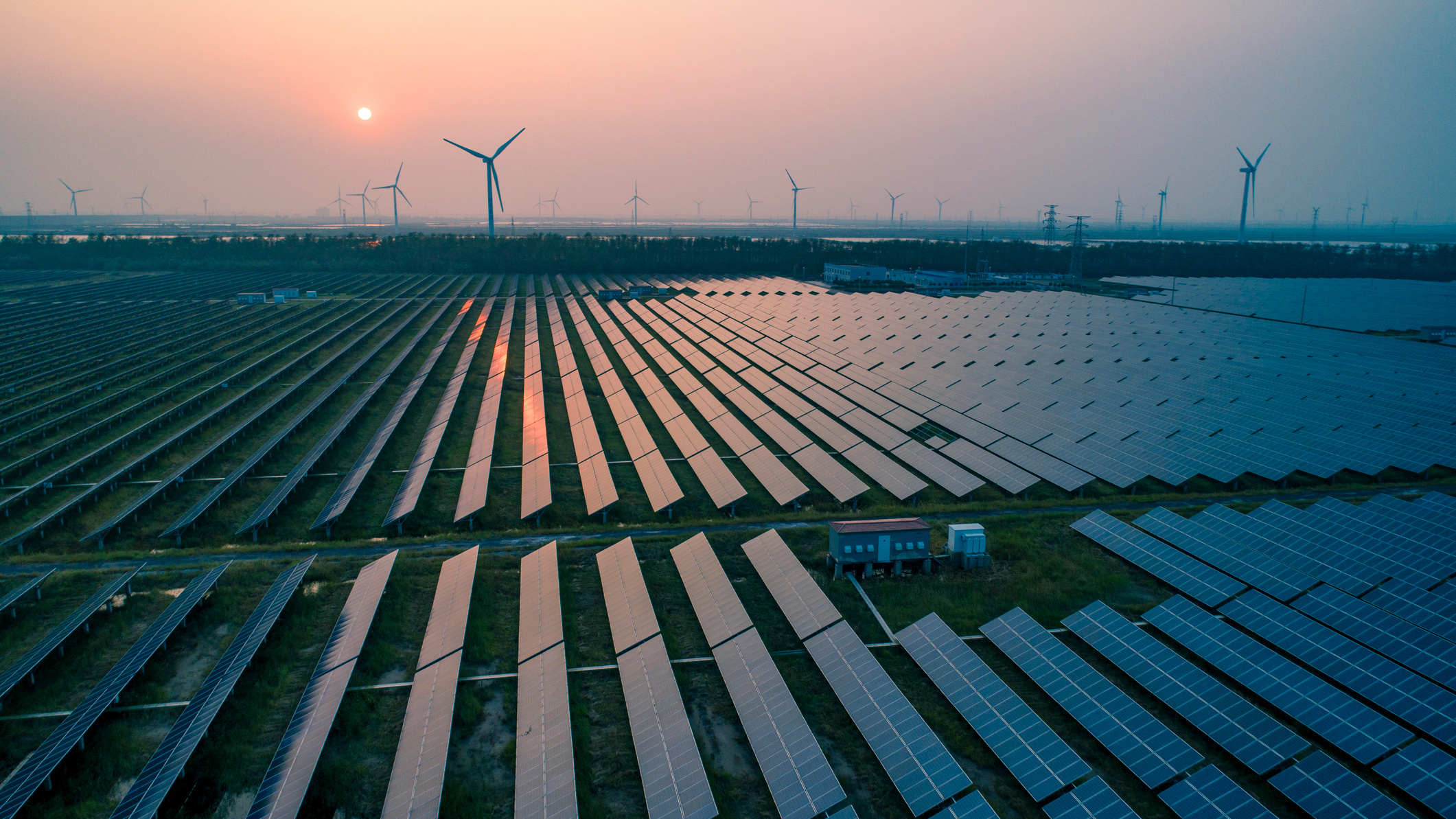Green Energy: WoodMac sees APAC wind and solar investments topping $US1.3tn by 2030

We're going to see a lot more of these in the coming years. Pic: Getty
Asia-Pacific investments in wind and solar will hit US$1.3 trillion this decade, according to analysts at Wood Mackenzie, more than double the level in the 2010s.
Carbon emissions from the power industry peak at 7.3 billion tonnes in 2025 before subsidy-free renewable power starts to become competitive with coal.
The firm sees growth in wind and solar power generation across China, Japan, India, South Korea and Taiwan, with an estimated two-thirds of annual average power additions to come from wind and solar by 2030.
WoodMac APAC head of power and renewables Alex Whitworth told delegates at the research advisory firm’s inaugural regional power and renewables conference in Singapore today the consultancy also sees coal power’s share of non-renewable investments falling by the 2030s.
However, investment in non-renewable energy will continue with gas growing its share of “fossil fuel” investments, which are expected to decline by 25% to around US$54 billion a year.
“Asia Pacific power generation investments are leading the world and expected to hit US$2.4 trillion in the current decade, with renewables accounting for over half or US$1.3 trillion of power investments,” he said.
“We expect coal to make up 55% of fossil fuel investments until 2030 but shrink to 30% in the 2030s as gas dominates.”
The inability to retire the region’s coal fleet however will prevent the sector from reaching emissions-free power by 2050, the milestone date for many economies to reach “net zero” targets.
“Although we expect a 47% drop in carbon emissions from the power sector from its peak of 7.3 Bt in 2025, inertia in the coal power fleet will prevent Asia Pacific from reaching carbon-free power by 2050,” Whitworth said.
“Adapting new emission reduction technologies such as carbon capture and storage and green fuels (hydrogen, ammonia, biomass etc.) into coal and gas generation will be key in reducing power sector emissions.”
In Australia, where renewables comprised more than 25% of the national electricity market for the first time in the March quarter this year, investment is expected by WoodMac to fall by 60% over the next five years before picking up again to average US$7 billion a year in the 2030s.
Senior analyst Le Xu described Australia as “a leader in the energy transition” in the region.
“The country has the highest variable renewable energy share in generation now and will accelerate the share from 20% in 2020 to 78% by 2050,” he said.
“The country is closing ageing coal-fired plants and facing reliability and cost challenges at least 10 years earlier than other Asian countries.”
Of course these predictions came ahead of the news of a major setback to the the Asian Renewable Energy Hub, after Federal Environment Minister Sussan Ley declared it “clearly unacceptable”, sending the proponents of the $US36 billion mega-project back to the drawing board.
Blue hydrogen for Stanmore coal mines
Coal miners are facing pressure to green up, but it is worth noting pure green hydrogen (hydrogen produced using renewable power) is not the only technology in the works.
There are companies have been looking at “blue hydrogen” – hydrogen that limits carbon emissions in the hydrogen production process via some form of technology like carbon capture and storage. It has been suggested such initiatives are necessary to begin the transition to the so-called “hydrogen economy”.
It appears to have support as well from the Morrison Government, which has faced criticism from green groups for referring to “clean” rather than “green” hydrogen in its policy rhetoric.
Blue Energy (ASX: BLU), a listed gas explorer, says it will convert gas from pilot production at its ATP814 tenement in Queensland’s Bowen Basin that would otherwise be flared into hydrogen for use in vehicles at Stanmore Resources’ (ASX: SMR) nearby coal mines.
According to Blue Energy’s MD, “being able to avoid flaring of pilot gas production by converting it to hydrogen is a step forward in reducing emissions prior to gas developments, and in this case has the added bonus of also lowering emissions from neighbouring mining operations.”
The company is now seeking tech partners for the proposed hydrogen production process.
Blue Energy share price today:
Related Topics

UNLOCK INSIGHTS
Discover the untold stories of emerging ASX stocks.
Daily news and expert analysis, it's free to subscribe.
By proceeding, you confirm you understand that we handle personal information in accordance with our Privacy Policy.








